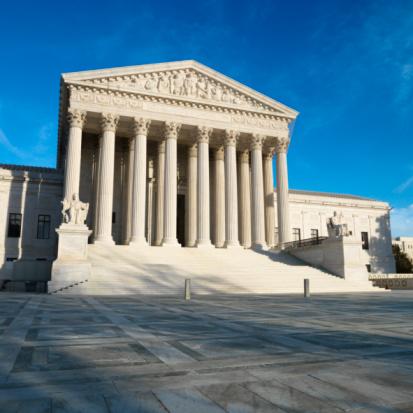 By a 5-4 vote, the U.S. Supreme Court ruled that the Environmental Protection Agency (EPA) erred in its rulemaking of its Mercury and Air Toxics Standard (MATS). In doing so, the decision could be a harbinger of things to come, particularly as the agency prepares to release specifics of the Clean Power Plan this summer.
By a 5-4 vote, the U.S. Supreme Court ruled that the Environmental Protection Agency (EPA) erred in its rulemaking of its Mercury and Air Toxics Standard (MATS). In doing so, the decision could be a harbinger of things to come, particularly as the agency prepares to release specifics of the Clean Power Plan this summer.
In Michigan v. EPA, the court ruled the agency ‘unreasonably’ failed to consider the cost of the regulations in rolling out MATS. In fact, the majority admonished the EPA for playing fast and loose with its justifications for rulemaking and for ignoring parts of the statute it doesn't like. The EPA rule was set to take effect in April.
The decision dealt a significant blow to a major Obama administration rule that limits the amount of mercury and other hazardous pollutants from power plants, narrowly ruling that the EPA erred while writing the rule.
A big question is what this decision means for the EPA's 111(d) rules due out later this summer.Â
Under the proposed Section 111 (d), the agency seeks to cut carbon emissions from the power sector by 30% below 2005 levels. Generally speaking, stricter power plant regulations could mean less coal, which could open up a big opportunity for wind power. In 2013, the American Wind Energy Association did a study that estimated the retirement of U.S. coal plants could lead to an increase of up to 17 GW of wind capacity – roughly 28% of the current installed U.S. wind generation.
According to Thomas R. Wood, a partner at law firm Stoel Rives, the decision signaled a shot across the EPA's bow about how the agency must approach rulemaking. And the ruling could have particular significance as the agency readies specific requirements to limit carbon dioxide pollution from existing power plants under Section 111 (d) under the Clean Air Act
‘It is likely too late for EPA to significantly change what it is intending to promulgate in response to the decision,’ Wood says. ‘However, this is the second decision in a row from the Supreme Court that chastises EPA for failing to take a strict and practical reading of the Clean Air Act.’
Wood says the decision strongly suggests that the EPA's novel ‘outside the fence’ approach – which is expected to be the foundation of the final 111(d) rule package – is exactly the sort of creative rulemaking that a majority of the Supreme Court opposes.
‘This may cause some back-peddling by EPA as it finalizes the rule,’ Wood says. ‘It will certainly fuel litigation for years to come.’



